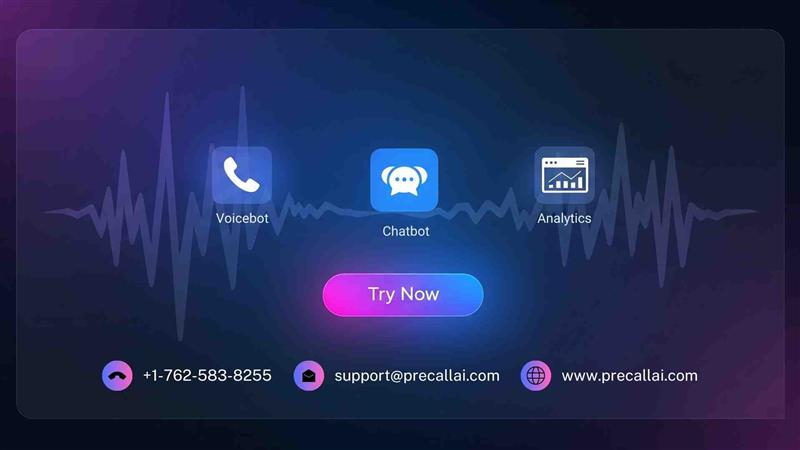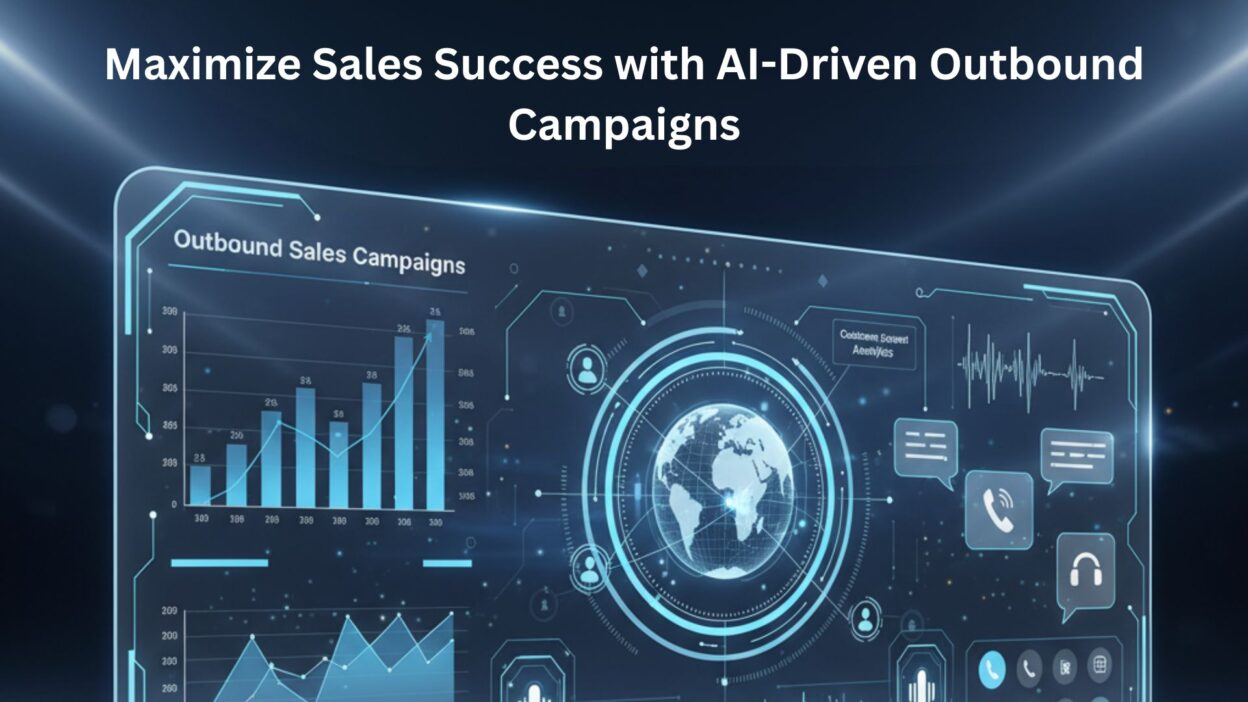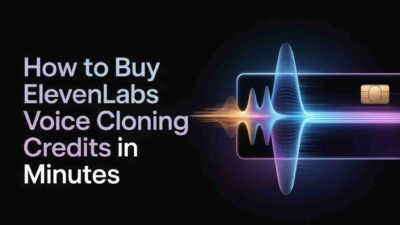Introduction to AI-Powered Sales Acceleration
TL;DR Sales teams face mounting pressure to deliver results in increasingly competitive markets. Traditional outbound methods struggle to generate quality conversations with prospects. AI systems for managing outbound sales campaigns transform how organizations approach prospecting and conversion.
Table of Contents
Manual prospecting consumes valuable selling time without guaranteeing results. Sales representatives spend hours researching leads and crafting personalized messages. Automation enables teams to focus on high-value activities like relationship building.
Modern buyers expect personalized experiences demonstrating understanding of their specific needs. Generic mass outreach fails to capture attention in crowded inboxes. Intelligent systems deliver relevance at scale that manual processes cannot match.
Understanding Modern Outbound Sales Challenges
Lead Quality and Prioritization Issues
Sales teams receive lists containing thousands of potential prospects. Not all leads offer equal opportunity for conversion and revenue. Determining which contacts to prioritize requires significant research and judgment.
Manual lead scoring relies on limited information and subjective assessment. Inconsistent qualification criteria create inefficiencies across sales organizations. Poor prioritization wastes effort on low-probability prospects while neglecting better opportunities.
Market dynamics change rapidly, making yesterday’s ideal customer profile outdated today. Static targeting approaches fail to adapt to evolving business conditions. AI systems for managing outbound sales campaigns continuously learn optimal prospect characteristics.
Personalization at Scale Demands
Every prospect expects communications acknowledging their unique situation and challenges. Cookie-cutter messages get ignored or deleted immediately by busy executives. Creating hundreds of personalized messages manually proves impossible for most teams.
Research time compounds when preparing individualized outreach for each prospect. Understanding company news, pain points, and decision-maker backgrounds takes hours. Manual personalization limits outreach volume, severely reducing pipeline generation.
Maintaining personalization quality across team members requires extensive training. Inconsistent messaging quality damages brand perception and response rates. Standardizing excellence proves difficult without systematic approaches.
Timing and Cadence Optimization
Reaching prospects at optimal moments dramatically affects response rates. Contacting someone too early wastes opportunity, while being too late means missing windows. Determining perfect timing requires analyzing patterns across thousands of interactions.
Multi-touch campaigns need coordinated sequences across email, phone, and social channels. Managing complex cadences manually introduces errors and missed follow-ups. Dropped sequences mean lost opportunities that might have converted.
AI systems for managing outbound sales campaigns identify individual prospect engagement patterns. Some respond best to morning emails while others prefer afternoon calls. Personalized timing optimization improves connection rates significantly.
Data Management Complexity
Accurate contact information is fundamental to successful outreach campaigns. Email addresses change, phone numbers disconnect, and people change roles frequently. Outdated data wastes time and damages the sender’s reputation through bounces.
Enriching basic contact lists with relevant intelligence requires multiple data sources. Company firmographics, technographics, and intent signals all enhance targeting. Consolidating information from disparate sources overwhelms manual processes.
Keeping CRM systems current with engagement data and prospect interactions challenges teams. Manual data entry introduces errors while consuming productive selling time. Poor data hygiene undermines analytics and decision-making quality.
How AI Transforms Outbound Sales Operations
Intelligent Lead Scoring and Prioritization
Machine learning algorithms analyze hundreds of variables to predict conversion likelihood. Historical data reveals patterns invisible to human analysis alone. Predictive scoring identifies prospects most likely to become customers.
Behavioral signals indicate buying intent more accurately than demographic criteria alone. Website visits, content downloads, and social engagement all inform scoring. Real-time updates adjust priorities as prospect behavior evolves.
AI systems for managing outbound sales campaigns segment prospects into actionable tiers. Top-tier prospects receive immediate attention from senior sales representatives. Lower-priority leads enter nurture sequences until engagement increases.
Dynamic Personalization Engines
AI-generated messaging incorporates prospect-specific information, creating relevant communications. Company news, pain points, and business challenges all influence content. Each message feels individually crafted rather than mass-produced.
Natural language generation creates compelling copy that matches the brand voice consistently. Tone, style, and messaging frameworks remain on-brand across all communications. Quality consistency exceeds what dispersed teams achieve manually.
A/B testing optimization happens automatically, identifying the highest-performing message variations. Systems learn which subject lines, openings, and calls-to-action work best. Continuous improvement compounds results over time systematically.
Optimal Timing and Channel Selection
Predictive analytics determine when individual prospects are most likely to engage. Historical patterns reveal optimal contact windows for different personas. Timing precision increases connection rates without additional effort.
Multi-channel orchestration coordinates outreach across email, phone, social, and direct mail. The right message reaches prospects through their preferred communication channels. Channel optimization improves response rates significantly compared to single-channel approaches.
AI systems for managing outbound sales campaigns prevent contact fatigue through intelligent frequency capping. Prospects receive appropriate touch volumes, avoiding annoyance from over-communication. A balance between persistence and respect preserves relationship potential.
Automated Research and Enrichment
AI tools gather relevant prospect intelligence from public sources automatically. Recent news, job changes, funding events, and company announcements all surface. Representatives enter conversations fully informed without manual research time.
Trigger event identification alerts teams to optimal outreach moments. Expansion announcements, leadership changes, and technology adoption all signal opportunities. Timely outreach aligned with trigger events dramatically improves conversion rates.
Data enrichment fills gaps in contact records with accurate current information. Email validation ensures deliverability while phone verification confirms connectivity. Clean data maximizes outreach efficiency and sender reputation.
Essential Features of AI Sales Platforms
Predictive Lead Scoring
Sophisticated algorithms evaluate prospects against ideal customer profile characteristics. Fit scoring assesses whether prospects match the target criteria demographically. Engagement scoring measures the interaction level, indicating interest and intent.
Propensity modeling predicts specific outcomes like meeting acceptance or purchase likelihood. Different models support various campaign objectives and sales stages. Predictive accuracy improves continuously as systems process more data.
AI systems for managing outbound sales campaigns surface hidden opportunities in existing databases. Dormant contacts showing renewed engagement signals automatically reprioritize. No opportunity escapes notice in properly configured systems.
Automated Sequence Management
Pre-built campaign templates accelerate the deployment of proven outreach sequences. Best-practice frameworks guide structure while allowing customization. Teams benefit from collective intelligence rather than starting from scratch.
Dynamic sequences adapt based on prospect behavior and engagement. Opens, clicks, and replies trigger appropriate next steps automatically. Responsive sequences feel conversational rather than rigidly scripted.
Multi-channel coordination ensures consistent messaging across all touchpoints. Email, phone, social, and direct mail all work together harmoniously. Unified campaigns create cohesive experiences for prospects.
Natural Language Generation
AI writing assistants create personalized email copy at scale. Context-aware generation incorporates prospect-specific details naturally. Output quality rivals or exceeds average human-written communications.
Subject line optimization generates attention-grabbing headers, improving open rates. Psychological principles and proven patterns inform suggestions. Testing reveals winners without manual experimentation overhead.
AI systems for managing outbound sales campaigns adapt tone and style for different audiences. Executive outreach differs from practitioner-focused communications appropriately. Context-appropriate messaging improves relevance and response rates.
CRM and Sales Stack Integration
Seamless connectivity with existing CRM systems eliminates manual data transfer. Prospect information, engagement history, and outcomes sync automatically. Integration prevents information silos, undermining effectiveness.
Sales engagement platform compatibility coordinates AI capabilities with daily workflows. Representatives work within familiar tools enhanced by intelligence. Adoption increases when AI augments rather than replaces existing processes.
Marketing automation integration aligns outbound efforts with inbound campaigns. Coordinated strategies prevent conflicting messages and duplicate outreach. Unified approaches present consistent brand experiences to prospects.
Performance Analytics and Reporting
Comprehensive dashboards display campaign performance across key metrics. Open rates, response rates, meeting bookings, and pipeline generation all track visibly. Real-time visibility enables rapid optimization and course correction.
Attribution modeling connects outbound activities to revenue outcomes. Understanding which campaigns drive business justifies investment and guides strategy. Accurate attribution prevents undervaluing top-performing initiatives.
AI systems for managing outbound sales campaigns identify trends and patterns requiring attention. Declining performance metrics trigger alerts enabling proactive responses. Continuous monitoring prevents small problems from becoming major issues.
Building Effective AI-Powered Campaigns
Defining Your Ideal Customer Profile
Detailed buyer personas guide targeting and messaging decisions. Demographics, firmographics, technographics, and psychographics all inform profiles. Precise definitions ensure campaigns reach genuinely qualified prospects.
Historical customer analysis reveals common characteristics among the best customers. Revenue, retention, and satisfaction patterns distinguish ideal from marginal accounts. Data-driven profiles outperform assumption-based definitions significantly.
Profile validation through testing confirms assumptions match reality. Campaigns targeting hypothetical personas sometimes discover unexpected opportunities. Iterative refinement based on results improves targeting accuracy continuously.
Creating Compelling Value Propositions
Clear articulation of customer problems demonstrates understanding and empathy. Prospects engage when they feel understood and validated. Problem-centric messaging resonates more powerfully than product-focused approaches.
Quantified benefits translate features into tangible business outcomes. Cost savings, revenue increases, and efficiency gains all appeal to executives. Specific numbers prove credibility while generic claims sound like hype.
AI systems for managing outbound sales campaigns test value proposition variations systematically. Market feedback reveals which benefits resonate most strongly. Winning messages scale across campaigns, maximizing effectiveness.
Developing Multi-Touch Sequences
Research shows multiple touchpoints are necessary for breakthrough with prospects. Single contact attempts rarely generate responses from busy executives. Persistence distinguishes successful outbound campaigns from abandoned efforts.
Sequence design balances persistence with respect for prospect time. Too aggressive approaches trigger annoyance, while too passive efforts get forgotten. Optimal cadences maintain visibility without crossing into pestering.
Content variety across sequence touches maintains interest and engagement. Educational content, case studies, and direct asks all serve different purposes. Varied approaches accommodate different learning styles and preferences.
Crafting Personalized Messaging
Relevance stems from demonstrating knowledge of prospect-specific situations. Generic messages signal a lack of research and genuine interest. Personalization proves seriousness and commitment to helping prospects specifically.
Research insights from AI tools enable authentic personalization at scale. Mentioning recent company news or industry challenges shows diligence. Specific references distinguish thoughtful outreach from spam.
AI systems for managing outbound sales campaigns personalize beyond simple mail merge fields. Sentence structure, examples, and entire paragraphs adapt to prospect characteristics. Deep personalization creates individual experiences despite automated generation.
Setting Up Tracking and Measurement
Baseline metrics establish starting points for measuring improvement. Current conversion rates, response rates, and cycle times all need documentation. Progress measurement requires knowing where campaigns started.
Key performance indicators align with business objectives and sales goals. Pipeline generation, meeting bookings, and closed revenue all matter differently. Appropriate metrics focus efforts on outcomes that matter most.
Regular reporting cadences keep stakeholders informed on campaign performance. Weekly reviews enable rapid adjustments while monthly analysis reveals trends. Consistent measurement supports continuous improvement efforts.
Advanced Strategies for Maximum Impact
Account-Based Marketing Integration
Coordinated campaigns targeting specific named accounts require different approaches. Multiple decision-makers within a single organization need consistent messaging. AI systems for managing outbound sales campaigns orchestrate complex multi-stakeholder outreach.
Personalization extends to company-specific pain points and industry dynamics. Generic value propositions fail with sophisticated enterprise buyers. Account-specific research and messaging demonstrate a serious commitment.
Sales and marketing alignment ensures consistent experiences across all touchpoints. Conflicting messages from different teams confuse prospects and damage credibility. Unified account strategies present professional, coordinated approaches.
Intent Data Incorporation
Behavioral signals indicate prospects actively researching solutions in your category. Intent data reveals anonymous companies showing buying signals. Timely outreach to in-market buyers dramatically improves conversion rates.
Topic-level intent shows specific pain points prospects are investigating. Messaging addressing exactly what prospects research resonates powerfully. Relevance stemming from intent data creates immediate engagement.
Competitive intelligence from intent data reveals prospects considering alternatives. Differentiation messaging highlights advantages over specific competitors. Strategic positioning based on intelligence improves win rates.
Social Selling Integration
LinkedIn and other platforms offer valuable channels for building relationships. Social engagement warms prospects before direct sales outreach begins. AI systems for managing outbound sales campaigns coordinate social and email touches.
Content sharing establishes thought leadership and credibility with prospects. Helpful resources build goodwill before asking for meetings. Educational approaches attract rather than interrupt potential customers.
Network analysis identifies mutual connections enabling warm introductions. Referrals from trusted sources carry more weight than cold outreach. Leveraging networks dramatically improves response rates.
Conversational AI for Initial Engagement
Chatbots and AI assistants handle initial qualification conversations at scale. Prospects get immediate responses to inquiries without waiting for representatives. Instant engagement captures interest before it fades.
Natural language processing enables sophisticated dialogue to feel genuinely helpful. Question answering, objection handling, and meeting scheduling are all automated. Human representatives inherit qualified, educated prospects ready for sales conversations.
Voice AI enables automated phone outreach to thousands of prospects. Initial calls qualify interest and gather information before human follow-up. Scale increases dramatically through conversational automation.
Optimizing Campaign Performance
Continuous A/B Testing
Systematic testing reveals which elements drive better results. Subject lines, opening sentences, calls-to-action, and content all impact performance. Incremental improvements compound into substantial gains over time.
Statistical rigor ensures test results represent real differences versus random variation. Proper sample sizes and confidence intervals prevent false conclusions. AI systems for managing outbound sales campaigns handle statistical analysis automatically.
Winner implementation scales successful variations across all campaigns. Learning from tests improves future campaign design systematically. Organizational knowledge accumulates, improving baseline performance continuously.
Response Rate Optimization
Email deliverability affects whether messages even reach prospects’ inboxes. Sender reputation, authentication, and content all influence delivery. Technical optimization ensures campaigns reach intended audiences.
Open rate improvement starts with compelling subject lines that earn attention. Preview text and sender name also affect open decisions. Testing and refinement identify optimal combinations for different audiences.
Reply rate increases when messages invite conversation rather than pushing products. Asking relevant questions stimulates engagement more than pitching. Dialog-focused approaches build relationships leading to eventual sales.
Conversion Rate Enhancement
Meeting booking rates depend on clear value propositions and easy scheduling. Friction in booking processes costs conversions unnecessarily. Calendar integration and simple scheduling tools remove obstacles.
Qualification criteria ensure representatives spend time with genuine prospects. Poor qualification wastes sales time while frustrating unfit contacts. Proper screening protects both parties from unproductive conversations.
AI systems for managing outbound sales campaigns identify conversion bottlenecks automatically. Drop-off analysis reveals where prospects disengage from sequences. Targeted improvements address specific weaknesses systematically.
Pipeline Acceleration
Follow-up speed affects conversion probability significantly after initial meetings. Rapid response demonstrates enthusiasm and professionalism. Delayed follow-ups allow competitor interference and prospect cooling.
Content delivery matching the buying stage advances prospects through sales cycles. Educational materials for early-stage prospects differ from proof points for late-stage. Appropriate content reduces friction in progression.
Objection handling automation addresses common concerns efficiently. FAQs, case studies, and testimonials preempt predictable questions. Proactive objection management shortens sales cycles meaningfully.
Compliance and Best Practices
Regulatory Compliance Requirements
CAN-SPAM regulations govern email marketing in the United States. Clear unsubscribe mechanisms, physical addresses, and truthful headers are all required. Violations carry substantial penalties, damaging both finances and reputation.
GDPR affects outreach to European prospects requiring explicit consent. Data protection principles demand careful handling of personal information. International campaigns need expertise in multiple regulatory frameworks.
AI systems for managing outbound sales campaigns include compliance features that prevent violations. Automatic unsubscribe processing, consent tracking, and documentation all support compliance. Built-in safeguards reduce legal risk substantially.
Ethical Outreach Principles
Respecting prospect preferences builds long-term relationships beyond individual transactions. Honoring unsubscribe requests immediately demonstrates integrity. Ethical practices enhance brand reputation, attracting rather than repelling customers.
Transparency about data sources and usage earns trust. Prospects appreciate knowing how companies obtained their information. Openness differentiates ethical businesses from questionable operators.
Value delivery should precede sales requests in outreach sequences. Helping prospects with useful information builds goodwill. Relationship-focused approaches yield better long-term results than aggressive selling.
Data Privacy and Security
Protecting prospect information demonstrates trustworthiness, essential for business relationships. Encryption, access controls, and security protocols all safeguard data. Breaches damage reputations permanently, in addition to legal consequences.
The minimum necessary principle limits data collection to truly needed information. Excessive data gathering raises privacy concerns and compliance risks. Collecting only essential information respects privacy while meeting business needs.
AI systems for managing outbound sales campaigns maintain audit trails for accountability. Understanding who accessed what data when supports investigations. Transparency within organizations prevents abuse and demonstrates responsibility.
Sender Reputation Management
Email deliverability depends heavily on sender reputation scores. Internet service providers monitor bounce rates, spam complaints, and engagement. Poor reputation causes messages to reach spam folders instead of inboxes.
List hygiene practices remove invalid addresses, preventing bounce issues. Regular cleaning maintains list quality and protects reputation. Engagement-based segmentation focuses efforts on responsive prospects.
Warm-up protocols gradually increase sending volume for new domains. Sudden volume spikes trigger spam filters, causing deliverability problems. Patient reputation building ensures long-term success.
Measuring ROI and Business Impact
Calculating Cost Per Lead
Total campaign costs include technology, personnel, and data expenses. Dividing total costs by leads generated reveals per-lead economics. Cost efficiency comparisons guide budget allocation across channels.
Lead quality affects true cost calculations beyond simple volume metrics. Qualified leads worth pursuing differ from tire-kickers wasting time. Cost per qualified opportunity provides a more meaningful measurement.
AI systems for managing outbound sales campaigns reduce cost per lead through efficiency gains. Automation handles volume without proportional cost increases. Economies of scale improve as campaigns expand.
Pipeline Generation Metrics
Qualified opportunities entering the sales pipeline represent campaign success. Pipeline value quantifies potential revenue from generated opportunities. Leading indicators predict eventual revenue outcomes.
Conversion rates from leads to opportunities validate campaign effectiveness. High conversion rates indicate quality targeting and messaging. Low conversion suggests targeting or qualification problems needing attention.
Pipeline velocity measures how quickly opportunities progress toward closing. Faster movement generates revenue sooner, improving cash flow. Campaign quality affects both quantity and speed of pipeline development.
Revenue Attribution
Closed-won revenue represents the ultimate measure of campaign success. Attribution models assign credit appropriately across multiple touchpoints. Accurate attribution guides future investment decisions.
Customer acquisition cost calculations include all marketing and sales expenses. CAC benchmarks determine acceptable spending levels per customer. Profitability requires CAC significantly below customer lifetime value.
AI systems for managing outbound sales campaigns demonstrate measurable return on investment. Automated efficiency and improved conversion rates justify technology costs. ROI typically appears within quarters of implementation.
Long-Term Customer Value
Initial sale value represents only part of the total customer worth. Retention, expansion, and referrals all contribute to lifetime value. Campaign evaluation should consider long-term implications beyond initial transactions.
Cohort analysis compares customer value across different acquisition sources. Some campaigns attract more valuable long-term customers than others. Optimizing for lifetime value differs from optimizing for initial sale.
Brand-building effects from outbound campaigns extend beyond direct attribution. Market awareness and perception improve through consistent quality outreach. Difficult-to-quantify benefits still contribute real business value.
Future Trends in AI Sales Technology
Hyper-Personalization Evolution
Next-generation systems will create truly unique experiences for every prospect. Video personalization, dynamic landing pages, and individualized pricing all emerge. Personalization depth will exceed current imagination levels.
Predictive content generation will anticipate prospect questions before asking. Proactive information delivery demonstrates mind-reading-like understanding. Relevance will approach one-to-one custom relationships at scale.
AI systems for managing outbound sales campaigns will integrate biometric and emotional data. Facial expression analysis and voice stress detection inform interactions. Empathetic AI adjusts approaches based on emotional states.
Autonomous Sales Agents
Self-directed AI agents will manage complete sales cycles independently. From prospecting through closing, automation will handle routine transactions. Human representatives will focus exclusively on complex strategic accounts.
Negotiation algorithms will optimize pricing and terms automatically. Win probability calculations guide concession decisions. Automated negotiation will match or exceed human performance.
Contract generation and legal review will be automated through AI systems. Document analysis ensures compliance and favorable terms. Legal processes that take days will be completed in minutes.
Voice and Video Integration
Phone conversations will benefit from real-time AI coaching and analysis. Representatives receive live suggestions during calls, improving performance. In-call assistance transforms every representative into a top performer.
Video messages will scale through deepfake-like personalization technology. A single recording becomes thousands of personalized versions automatically. Visual communication will achieve email-like scale and efficiency.
AI systems for managing outbound sales campaigns will enable seamless omnichannel experiences. Conversations will continue naturally across email, phone, text, and video. Channel switching will happen fluidly based on prospect preferences.
Frequently Asked Questions
How much does AI sales software cost?
Pricing varies from hundreds to thousands monthly, depending on features and scale. Small business solutions start around $100 per user monthly. Enterprise platforms cost significantly more but handle larger volumes.
Can AI replace sales representatives?
AI augments human capabilities rather than replacing salespeople entirely. Technology handles routine tasks while humans build relationships. Complex sales requiring emotional intelligence remain human activities.
How quickly can we see results?
Most organizations see improvement within 4-8 weeks of implementation. Initial results come from quick wins like better targeting. Compounding benefits grow as systems learn and optimize.
What data is required for AI systems?
Historical sales data, CRM records, and customer information train systems. More data enables better predictions and personalization. Quality matters more than quantity in training data.
Do prospects respond to AI-generated messages?
Well-crafted AI messages often outperform human-written alternatives. Prospects care about relevance, not authorship. Quality personalization drives responses regardless of creation method.
How does AI affect sales team morale?
Most representatives appreciate automation handling tedious tasks. Job satisfaction improves when focusing on engaging activities. Proper positioning as augmentation prevents anxiety.
Is AI-powered outreach ethical?
Ethical implementation respects prospect preferences and delivers value. Transparency about automation maintains trust. AI systems for managing outbound sales campaigns enable ethical scaling.
What industries benefit most from AI sales?
B2B technology, professional services, and manufacturing see strong results. Any business with complex sales cycles benefits significantly. High-volume transactional sales also improve through automation.
How do we integrate AI with existing tools?
Modern platforms offer pre-built integrations with major CRM systems. APIs enable custom connections with proprietary tools. Integration complexity varies, but most systems connect readily.
What skills do sales teams need?
Representatives need strategic thinking and relationship-building abilities. Technical AI operation skills matter less than sales fundamentals. Training focuses on leveraging insights rather than creating them.
Read More: Are Your Service Business Sales Strategies Falling Short?
Conclusion

AI-powered outbound sales represent a fundamental shift in go-to-market strategies. AI systems for managing outbound sales campaigns deliver measurable improvements in efficiency and effectiveness. Organizations embracing these technologies gain significant competitive advantages.
Implementation requires thoughtful planning, proper integration, and continuous optimization. Success depends on combining technological capabilities with human expertise. Neither AI nor humans alone achieve what collaboration produces together.
Sales teams liberated from repetitive tasks focus on high-value relationship building. Productivity multiplies when automation handles research, personalization, and follow-up. Better work experiences reduce turnover, improving organizational stability.
Prospects benefit from more relevant, timely, and helpful communications. AI-enabled personalization creates experiences previously impossible at scale. Better buyer experiences lead to higher conversion rates and satisfaction.
The competitive landscape increasingly favors early AI adopters. Organizations that delay implementation fall behind competitors in leveraging these advantages. Now is the time to begin transforming outbound sales operations.





